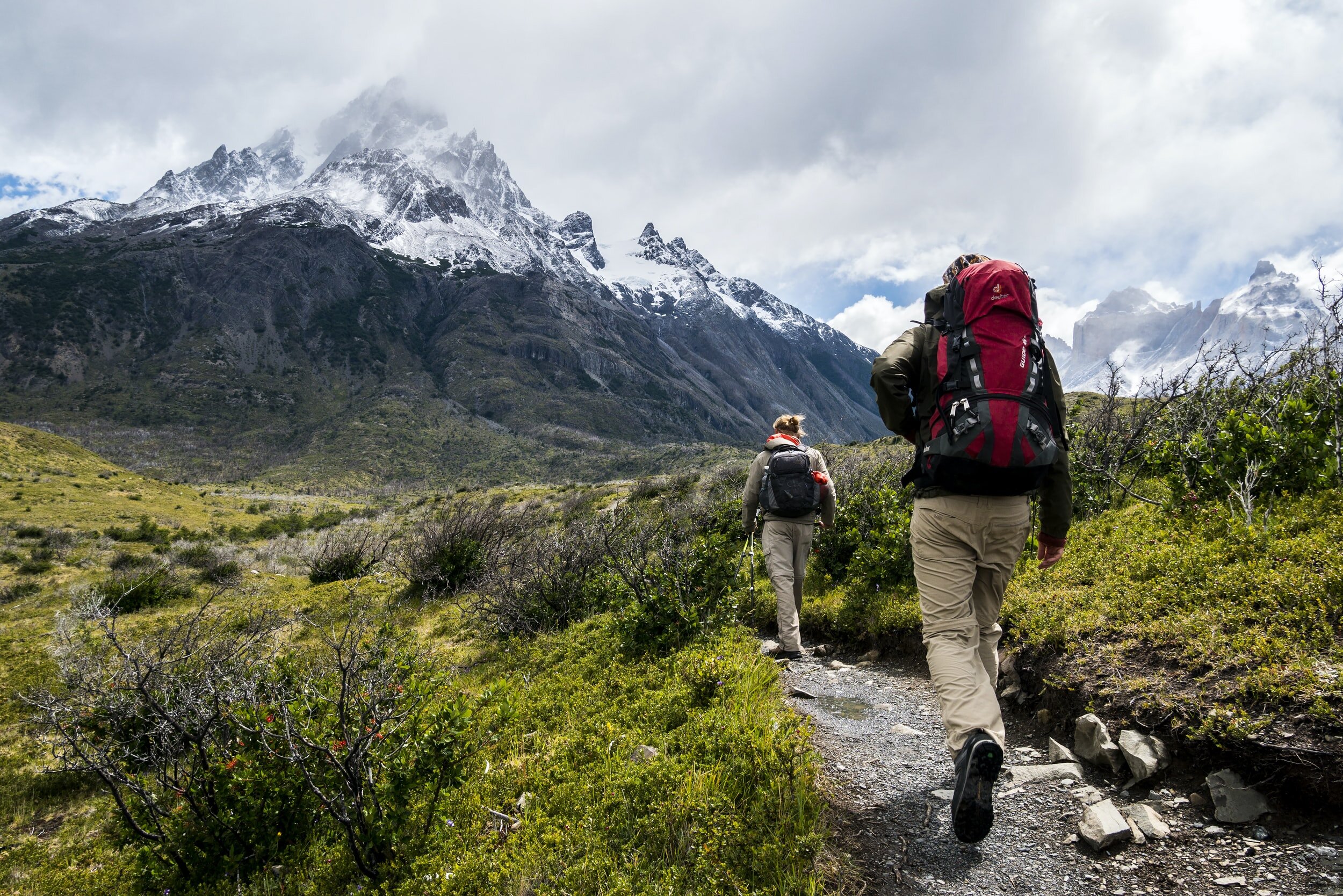
Day Hiking
Found in this list:
Day Pack, Water Bladder, Water Bottle/s, Hiking Boots/Trail Runners, Head Lamp, Moisture Wicking and Insulating Layers, Rain Gear, First Aid Kit
Day Pack: Osprey Duro 15 with 2.5L Reservoir and Osprey Skimmer 28
I have used Osprey backpacks exclusively for years. I alternate the size and style of my pack depending on the intended type and duration of the hike, but no matter the style of the pack, the brand is Osprey.
Water Bladder: 2L Hydraulics Reservoir
Water bladders are an awesome addition to water bottles because they are lightweight and they offer easy access to your water without needing to take off your pack. I have personally noticed increased hydration on hikes where I bring my water bladder.
Water Bottle/s: REI Co-op Nalgene Sustain Graphic Wide-Mouth Water Bottle - 48 fl. oz. and Nalgene Ultralite Wide-Mouth Water Bottle - 32 fl. oz.
Having at least one water bottle as a backup to your bladder, or as additional water for longer hikes is helpful. It also allows you to share your water with someone else in need without sharing the mouth piece on the water bladder.
Trail Runners: Mesa Trail - Lightweight Trail Runner
I almost always hike in trail runners for day hikes. I have found Xero Shoes to be the ultimate shoe for me because of how lightweight, flexible, and breathable they are. They give extra space in the toes to allow for a natural flex of the foot, and they have a 5,000 mile sole warranty.
Head Lamp: Black Diamond Storm 400 Headlamp
Even though I have no intention of day hiking after sunset, planning for worst case scenarios is always encouraged. I have found both Black Diamond and Petzel to be quality brands for head lamps, but I tend to stick with Black Diamond simply because I have become accustom to their features. I also appreciate their product warranty that provides me with comfort when purchasing an expensive product.
Moisture Wicking and Insulating Layers:
- REI Co-op Women's Midweight Base Layer Half-Zip Top
- Patagonia Better Sweater Full-Zip Hooded Jacket - Women's
- REI Co-op Women's Midweight Base Layer Tights
Having at least one extra layer in my pack is a must for me, no matter how short the hike or how beautiful the weather. Accidents happen, weather changes, and people get lost. Being prepared is always encouraged, and having moisture wicking and insulating layers is a great way to protect yourself. My trekking clothing varies by season, but I have listed a few key items that I bring on most treks. If you’re looking for new trekking clothing of your own I would say that anything from the following brands will provide a solid option.
Outdoor Research
Cotopaxi
REI
Patagonia
You can also seek out deals on quality brands at: Backcountry and Steepandcheap
Rain Gear: : Patagonia Torrentshell 3L Jacket - Women's and REI Co-op Women's Essential Rain Pants
I rarely plan day hikes when I know it will be rainy, but weather can be fickle and being prepared is always encouraged. A simple lightweight rain jacket can make the difference between an enjoyable hike and an uncomfortable one.
First Aid Kit: HART Outdoor Multiday First Aid Kit
My med kit is an altered version of this kit. I add items I might need for the specific activities I am brining it on and restock it often. I strongly suggest you only bring med kit items you know how to properly use. You won’t magically learn how to use gear in the field and it only serves as extra weight.
SPOT Device: SPOT Gen4
This is a key item for peace of mind. If not for yourself, then for your family. I have luckily never had to use it, but it is reassuring to know that if I were to be in desperate need of medical attention while backcountry I would be able to receive it at the press of a button. SPOT requires a yearly subscription that covers search and rescue, and the fees associated with it, as well as a set amount of medical expenses.
** This list is in no way intended to be comprehensive. When preparing for your own trip be sure to reference the 10 Essentials for hiking and backpacking. Proper Nutrition, sun protection, emergency shelters and fire starters, etc. are important pieces of my gear even though they are not included on this list. Every packing list should take into account distance from rescue services, intended time spent in the wilderness, and natural threats (wildlife, weather, terrain, etc.) present.